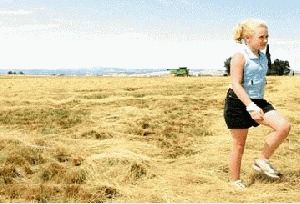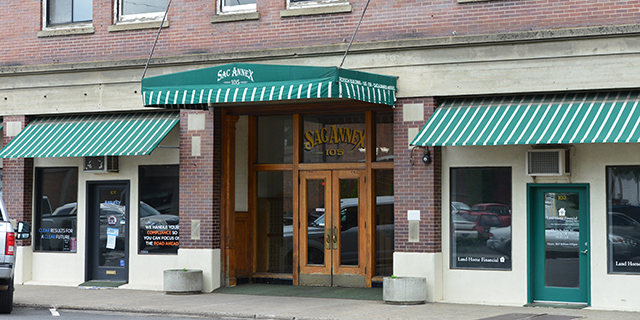Alternative crops may be silver lining to hay shortages
Published 12:00 am Saturday, July 14, 2007

- WIN-WIN SITUATION: Leaving the combine behind, Macy Smith takes a break from harvesting fescue grass seed Wednesday in fields near Island City. The remaining grass will be baled and sold. Growers could make a little money off grass hay and wheat straw this year if beef producers warm to it as supplemental feed to offset current higher alfalfa hay prices. (The Observer/CHRIS BAXTER).
– Mardi Ford
– The Observer
Eastern Oregon beef cattle producers spooked by the high cost of feeding alfalfa hay through the winter may want to look at some alternative feed sources that will be outlined at a seminar next week.
The feed seminar is set for Thursday from 1 to 4 p.m. at the Blue Mountain Conference Center in La Grande and is being hosted by Oregon State University and the Animal Health Center, Island City.
The price of hay has increased significantly this year due to multiple, overlapping changes in the ag industry.
Complex changes being driven by increases in biofuel crops production, the subsequent decreases in hay production, as well as significant increases in fuel and labor costs and a prolonged drought in the West.
All of these forces could have a devastating impact on beef cattle production in the West, which will translate into lower profits for producers and higher prices for consumers.
"I’m no cattle production expert," says veterinarian Terry McCoy, "but the figures out there I’m hearing are scary."
McCoy says the costs to local ranchers of raising a steer to market could be as high as $400 per head. Compare that, he says, to costs for a competitor like Brazil, for example, where they could be as low as $150 per head.
"And most of the cost is in feed," he says. "We want to make producers aware of available feeds not traditionally used in this area."
McCoy approached Tim DelCurto with Oregon State University about doing next week’s feed seminar to look at options alternative and supplemental feeds like bluegrass, fescue and wheat straw, grass seed pellets and other supplements.
"So we’re bringing in some people with some knowledge to open the dialogue on this now," McCoy says. "It can’t wait until next winter’s cattleman’s workshop by then it’ll be too late."
Although one speaker, Matt Ramsey, a national manager for Cattleman’s Choice Loomix, Inc., will be speaking on supplemental feeds and cattle nutrition, both McCoy and DelCurto are adamant the seminar attendees will not hear a sales pitch for Loomix supplements.
"I absolutely do not want this to be a commercial event. That’s not what this is for. But Matt is extremely knowledgeable about nutritional supplements and he’ll have a lot to say on a variety of options," McCoy said.
Also on the agenda is OSU’s Chad Mueller, who spoke on supplemental feeding with distiller grains at last January’s cattlemen’s workshop.
Thursday, he’ll be speaking about not only the performance benefit of supplemental feeds, but the economic advantages as well. He says there are bottom-line benefits to looking at lower quality feeds for cattle.
"Cows don’t need a lot of protein. If they’re fed too much high-end feed their bodies go into a different mode to get rid of that extra protein and they actually lose weight. I want to show producers how they can actually use these lower quality feeds like grass hay to fit into their nutrition program," Mueller says.
DelCurto has also studied beef cattle nutrition for years at the Ag Research Station in Union, and says the current hay situation for cow calf operations is serious.
He estimates that alfalfa hay crop production is about 50 to 75 percent short of average, with a cost that is about 50 to 75 percent higher.
"We have a drought and crop shortages that are driving feed prices sky high," he says. "We’re in crisis mode here in Eastern Oregon."









